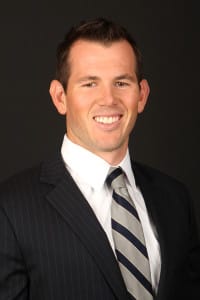FineMark Bank’s Christopher Highmark shares insights on how to invest like an athlete in the July/August issue of Private Air Magazine.

Professional athletes have the potential to amass large sums of money over a relatively short time frame. Unfortunately, the majority of them do not have lengthy careers and consequently, do not retain significant amounts of wealth. Accordingly, with regard to investing, we take the approach that an athlete’s current contract or bonus will be their last major paycheck. As a result, for most professional athletes, a portfolio of conservative asset allocation is prudent considering that an injury or a year of poor performance could cause him or her to prematurely retire. A conservative allocation is comprised of a greater percentage in fixed income and alternative assets, such as hedge funds and private equities, that have a lower correlation to the stock market than equities. An athlete’s best opportunity to make money should be making a critical putt on the 18th green on Sunday or getting an extra hit each week. A byproduct is that the athlete will focus on their sport and not about the performance of the stock market.
At FineMark National Bank & Trust we are fiduciaries. We are legally bound to do what is in the best interest of our clients. Unfortunately, many athletes are approached by individuals in the financial industry who do not always do what is in the best interest of their clients. We all have read where 78% of NFL players and 60% of NBA players file bankruptcy within five years of retirement. This occurs for two primary reasons: overspending and poor investment decisions. The most difficult thing to do in retirement is cut back on spending after becoming accustomed to a higher standard of living. At FineMark, we set a budget with our clients while they are still performing at their sport. This creates spending habits and a lifestyle that will be sustainable during retirement.
It seems that most athletes have friends or family with good ideas for a product or business investment. Unfortunately, for these products or businesses to be successful, they typically require more capital than is budgeted. Most athletes have difficulty turning down family and friends, so FineMark analyzes the investment and assists our clients in accepting or rejecting an opportunity. Even for the proposed opportunities we that think have detailed and achievable plans and budgets, we suggest limiting an investment in these opportunities to 10% of a client’s portfolio. We believe that 10% is substantial enough to make a positive impact on an athlete’s financial condition if it succeeds, but will not adversely impact their lifestyle if the investment fails.
The asset allocation of the athlete depends on his or her specific financial goals, contract situation and ability to make a living after their athletic career has ended. We treat an athlete who is struggling to remain in their sport differently from those who have a five-year contract or the ability to earn substantial income after their playing days are over. Most athlete clients fall in the prior category which equates to treating them as we would any client who is about to retire. The athlete’s investment time horizon is short since they may need to quickly tap into these funds in retirement. Consequently, we keep the asset allocation conservative and in low volatility investments. However, if an athlete has a long-term contract or will be able to supplement their income by working when their playing days are over, they may have a longer time horizon and can take on more risk in their portfolio.

Photo by Brian Tietz
By Christopher Highmark
Senior Vice President & Private Wealth Advisor
View the article in the Private Air Luxury Homes Magazine interactive flip book here.






